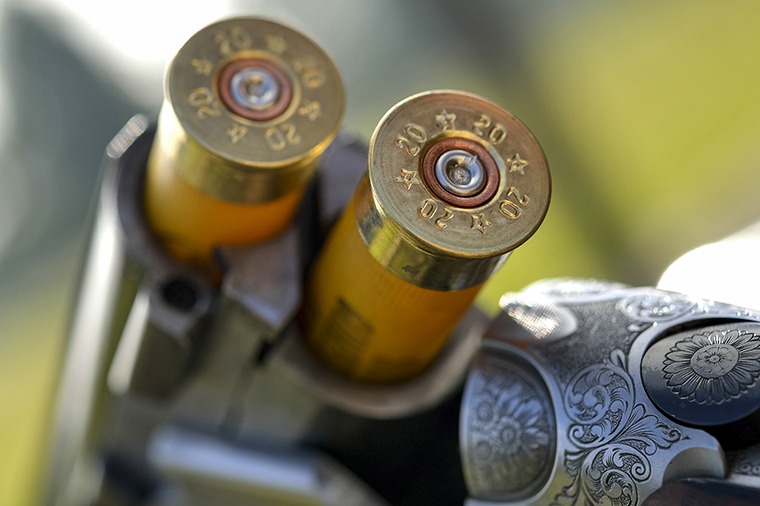
Despite a widely publicized legal opinion voiced by The Canadian Sporting Arms and Ammunition Association (CSAAA) and the Canadian Shooting Sports Association (CSSA), shotguns in 10 and 12 gauge remain legal in Canada.
The groups put out a press release on May 2, asserting the opposite.
This came a day after the federal government prohibited by Order-in-Council the purchase, sales, transport, import or use of more than 1,500 models of “military grade” firearms, which were legal prior to the prohibition. Of those, 1,050 were variants of nine styles of military assault-style rifles that were previously classified as restricted or non-restricted.
Bore diameters and muzzle energy
The legal opinion was based on characteristics listed in section 95 of the new regulations, which prohibited firearms with bore diameters of 20 mm or greater. The government claimed this, along with another prohibited characteristic of any firearm with a muzzle energy greater than 10,000 joules, was intended as a measure meant to prohibit .50 calibre firearms and grenade launchers.
Firearms affected by these restrictions account for the remaining 450 of the firearms listed as prohibited under the new regulations. The government stated that the potential power of these firearms exceeds safe civilian use.
What about chokes?
The legal opinion of the CSAAA and CSSA argued, however, that some 10- and 12-gauge shotgun bores can exceed 20 mm if they have certain screw-in choke systems and the choke is removed. This would, according to their legal opinion, make those shotguns prohibited under the new restrictions.
Minister of Public Safety and Emergency Preparedness Bill Blair responded on Twitter the following day, asserting that the shotguns in question remained legal.
Canadian Firearms Program clarifies
Shortly afterwards, the Canadian Firearms Program clarified their definition of shotgun bore diameters as follows:
“In interpreting s. 95 of the Classification Regulations, the CFP is of the view that the reference to a bore diameter of 20 mm with respect to 10- and 12-gauge shotguns should be interpreted as meaning the nominal bore diameter for these types of firearms. This is the approach the CFP has historically employed for other firearms classification assessments which are reflected in the Firearms Reference Tables.
The nominal measurements of 10-gauge and 12-gauge shotguns are 19.69 mm for 10-gauge shotguns and 18.42 mm for 12-gauge shotguns. While recognizing that there may be very limited exceptions, these are the measurements relied on by the CFP for the purposes of classification of these firearms in the FRT, which are below the 20 mm threshold for the purposes of s. 95 of the Classification Regulations.”
Under that interpretation, 10- and 12-gauge shotguns would not be prohibited based on bore characteristics.
Classification caused confusion
Despite this, OFAH Manager, Fish and Wildlife Services Manager Matt DeMille said, “The OFAH is seriously concerned about the way government is classifying firearms. Many firearms became prohibited overnight without the typical regulatory consultation and it has created mass confusion and uncertainty about what firearms can be used, bought and sold, and even imported into Canada. This obviously affects people who own what the government has deemed ‘military-style assault firearms,’ but the impact is starting to be felt by many more firearms owners.
The government has repeatedly stated that the prohibitions are not intended to affect hunting firearms, but the introduction of bore diameter and muzzle-energy thresholds has resulted in a much bigger list than what was released on May 1. Even those people not directly impacted by the growing list of prohibitions may feel the effects this summer and fall if they are in the market to buy a firearm because industry is warning that uncertainty in the interpretation of the prohibitions will impact the supply chain, even for some common non-restricted hunting firearms. The OFAH continues to help our members understand the new prohibitions while advocating against arbitrary classification.”
Resources
For a list of prohibited firearms under the new regulations visit Canada Gazette, Part II, Volume 154, Extra Number 3.
More information can be found at The Canadian Firearms Program.
For an up-to-date understanding of the new regulations and the answers to frequently asked questions, visit www.ofah.org/firearms/may-2020-faq.






I have been target shooting since I was a kid and hunting occasionally since the late 80s. It is getting harder to find a place to shoot or hunt. Now at my age of being a Senior the government ( dictatorship) is trying to take one of the few rights and enjoyments away from us that are left.
We will not compile !
The Derya shotgun I used for Turkey hunting has now been made Prohibited in the RCMP database. So contrary to what Bill Blair says, the ban affects some shotguns too.
If you get the visitation, please ask for the Officer.s PAL. Odds are he/she doesn’t have one. They are allowed to have a gun as required by their employment only. Most off them I have met after work & a few bubblies’ when asked they did not posses one. Therefore they cannot handle your gun without one.and your permission to .
My friend was an armorer for 19+ yr.’s oh, and top all proud shot for 3 years in a row & He never had one.
I may be incorrect in some of my comments, but they maybe incorrect in few instances.